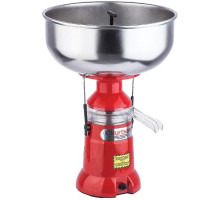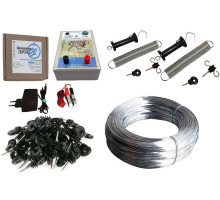Energy-efficient agriculture: how a farmer can save on electricity and gas
In 2025, rising electricity and gas prices combined with an unstable economic situation are forcing Ukrainian farmers to look for ways to reduce energy costs. According to the Ukrainian Agrarian Business Club (UKAB), energy costs can account for up to 15–20% of total farm costs. The introduction of energy-efficient technologies allows not only to reduce these costs, but also to increase the competitiveness of the farm. In this article, we will consider 10 key ways to save on electricity and gas , which will help farmers optimize costs while maintaining productivity.
1. Installation of solar panels
Solar energy is one of the most promising sources for farmers. Installing solar panels allows you to provide electricity to farms, grain dryers, and pumping stations. According to companies such as MHP, 50 kW solar power plants can pay for themselves in 3–5 years due to electricity savings.
- Advantages: reduction in electricity costs by up to 70%.
- State support: compensation of up to 30% of the cost of equipment through the Green Energy program.
- Tip: Use hybrid systems to store energy in batteries.
2. Use of energy-efficient equipment
Upgrading equipment such as pumps, fans or grain dryers to models with a higher energy efficiency class (A++ or higher) can reduce electricity consumption by 20–30%. For example, modern grain dryers with heat recovery save up to 15% energy compared to outdated models.
Recommendations:
- Replace old pumps with energy-efficient models with frequency converters.
- Use LED lighting for farms and warehouses.
- Perform regular maintenance to maintain equipment efficiency.
3. Implementation of biogas plants
Biogas plants allow the production of electricity and heat from organic waste such as manure, straw or silage. According to the Institute of Bioenergy Crops, one biogas plant with a capacity of 1 MW can provide energy for a 50-hectare farm, reducing gas and electricity costs by 40–50%.
| Raw material type | Cost of biogas production, UAH/m³ | Savings compared to natural gas, % |
|---|---|---|
| Manure | 8–12 | 50–60% |
| Silage | 10–15 | 40–50% |
| Straw | 12–18 | 30–40% |
Tip: Use biogas production residues as organic fertilizer.
4. Optimization of heating and ventilation systems
Farms, greenhouses and warehouses require significant heating and ventilation costs. The introduction of thermal insulation materials and heat recovery systems can reduce gas consumption by 20–30%. For example, the use of heat pumps for heating greenhouses reduces gas costs by 25%.
How to act:
- Install heat recovery systems in poultry houses and pig farms.
- Use infrared heating for localized heating.
- Improve building insulation to reduce heat loss.
5. Use of heat pumps
Heat pumps are an effective alternative to gas boilers for heating and cooling. They use the energy of the earth, water or air, which allows you to save up to 50% of electricity compared to traditional systems. In 2025, heat pumps are becoming increasingly popular in the agricultural sector of Ukraine.
Example: A farm in Vinnytsia Oblast reduced greenhouse heating costs by 40% after installing a geothermal heat pump.
6. Implementation of energy management systems
Energy management systems (EMS) allow you to monitor and optimize electricity and gas consumption in real time. For example, sensors and software can automatically turn off equipment during idle times, saving up to 10–15% of energy.
Advantages:
- Peak load control to reduce tariffs.
- Process automation to reduce the human factor.
- Integration with solar panels and biogas plants.
7. Purchase of energy resources at favorable tariffs
Purchasing electricity and gas at fixed rates or during off-seasons can reduce costs by 5–10%. For example, concluding contracts with suppliers during periods of low prices (autumn-winter) allows you to save money.
Tip: Work with energy cooperatives to get discounts on bulk purchases.
8. Use of alternative energy sources
In addition to solar energy, farmers can use wind turbines or small hydroelectric power plants (if there is access to water). For example, installing a 10 kW windmill can provide electricity for an irrigation pumping station.
Forecast for 2025: Rising electricity prices (up to 7–8 UAH/kWh) make alternative sources increasingly attractive.
9. Energy efficiency training for staff
Proper operation of equipment and conscious use of energy resources can significantly reduce costs. Training staff in energy-efficient practices can save up to 5–10% of electricity and gas.
Recommendations:
- Conduct energy efficiency training for equipment operators.
- Implement employee motivation systems that promote savings.
- Use telematics systems to monitor energy consumption.
10. Participation in state and international programs
In 2025, farmers can take advantage of government programs, such as compensation for the costs of energy-efficient equipment or grants for the installation of solar panels. For example, the Energy Efficiency in Agriculture program from the Ministry of Agriculture and Food compensates for up to 40% of modernization costs.
How to get support:
- Register in the State Agrarian Register.
- Apply through the "Diya" portal.
- Follow programs from international organizations such as IFC or EBRD.
Energy price forecast for 2025
According to forecasts, in 2025, electricity prices in Ukraine will increase to 7–8 UAH/kWh, and natural gas prices to 15–18 UAH/m³. However, off-season purchases and government subsidies may partially offset this increase. The introduction of energy-efficient technologies will be a key factor in maintaining profitability.
Conclusion
Energy-efficient agriculture is not only a way to save on electricity and gas, but also a strategy to increase the competitiveness of farms. Combining modern technologies such as solar panels, biogas plants and heat pumps with rational resource management allows you to reduce energy costs by up to 50%. Start with small steps, such as upgrading equipment or training staff, and gradually move on to large-scale solutions to maximize savings.













